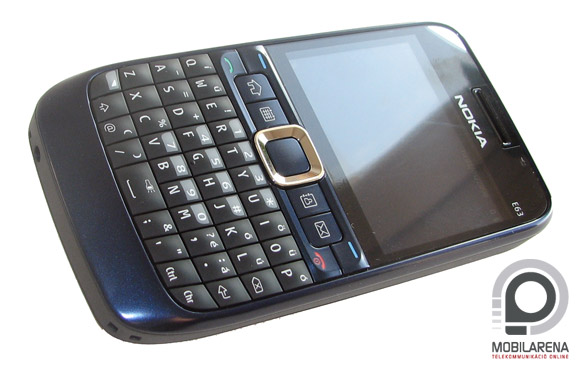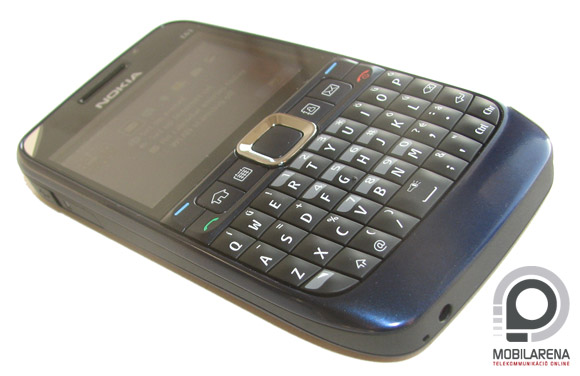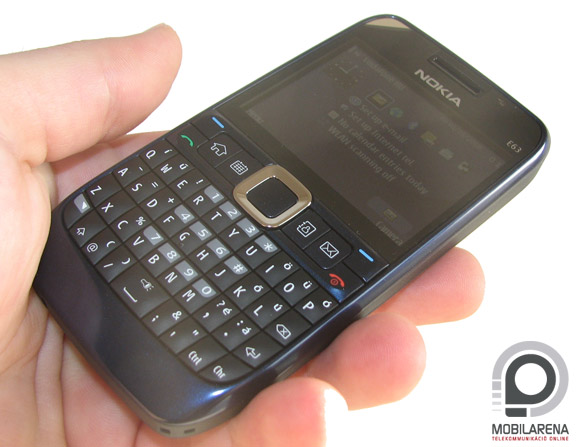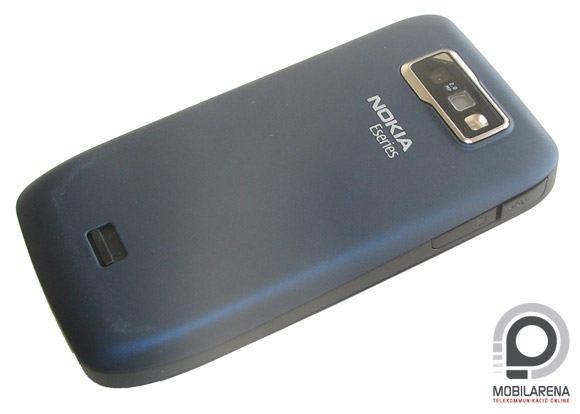Exterior
Now, let’s see the first differences. E63 is easier to recognize, as compared to the cold and elegant metallic materials of E71 this model is available in pastel red and blue colors. This also means that we can say goodbye to metal, everything is made of plastic here, but they have taken care of the surface, the handset is covered in soft plastics, even though this turned the back cover into a real dust-magnet.
When having a look at the size it might strike us that although it’s a tiny bit shorter (E71 has a pointed bottom), it’s also wider and about 3 mm thicker, but it’s still not too chubby, it fits an average hand very well. There is another difference on the outside, which is not to be neglected at all: E71’s 2.5 mm jack connector has been swapped out to the more wide-spread standard 3.5 mm one and it is now placed on top of the phone. This is great news, there is only one problem: this hole is covered by a small rubber plug, which will be the first (and probably only) part to be lost by the user in minutes, as it’s not connected to the phone at all.
Otherwise E63 is a clone of E71, the display diagonal is still 2.36”, it uses landscape QVGA resolution and the keypad layout is almost the same as on the predecessor. There have been no complaints about this until now, the embossed keypad is easy to use even in spite of the fact that the keys are crammed into a rather small area. The layout and functions of the navigation controls didn’t change, this is also all right. The only change is related to the space key, as it became smaller, as there are two extra keys near it and it also has a flashlight icon on it, which is no accident. By default, when pressing this key, the LED on the back turns on.
All buttons have disappeared from the sides. This might be my special aberration, but I just need volume control keys on the sides of a phone, as this is the handiest place. It’s real stupid to tamper with the navigation keys between my face and the phone during a call, and another thing one is looking for on the sides of a camera phone is the exposure key. Now there are only two doors on the left side of the handset, the first is for the memory card, while the other one is the microUSB port. The phone is charged via the good old Nokia connector on the bottom.
The camera on the back has an emphasized frame, which is rather unnecessary, since there has been some downgrade applied over here too. E63 has only a 2 megapixel fix focus lens, which could have been just a simple hole. Of course this doesn’t look bad, it just has no reason. The back panel can be easily taken off with a key and we’ll see a large, flat battery.
A cikk még nem ért véget, kérlek, lapozz!












